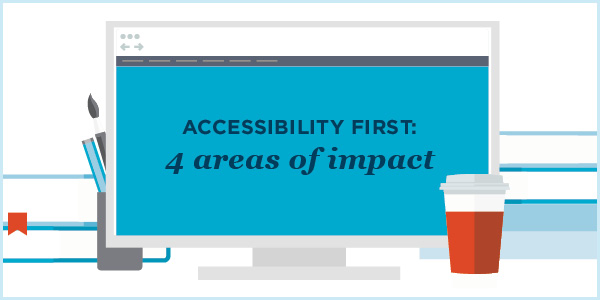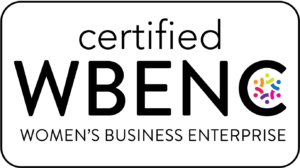
Accessibility First: 4 Areas of Impact
In April, our teams participated in a day of discipline-specific training that allowed each group to focus on themes most relevant to their everyday work. Our creative team chose accessibility both as a general refresher and as a deep dive into making our work more inclusive. The day started with a presentation from Lynn Wehrman, president/founder of and director of public relations at WeCo Accessibility Services.
WeCo is a company based in Minneapolis, Minnesota, that unites organizations with expert professionals living with disabilities. Their mission is to foster accessibility, awareness and independence for all people, regardless of their disabilities.
We approached WeCo and Lynn to help our team understand the evolving world of accessible design in both digital and physical spaces. Before we met, our team asked, “What would our accessibility checklist look like if it was created by a group of people currently living with disabilities?” Lynn came prepared with an ultimate wish list of action items for our team to focus on. Presenting the wish list and the perspectives from her team members who live with various disabilities provided our team with tangible input from people who are impacted by design decisions every day.
After our morning with Lynn, our team participated in conversations about how we can implement all facets of accessibility more concretely into our design process at Fusion Hill. There were many useful takeaways from our training day; here are a few:
- Strive for organizational awareness AND technical know-how. All team members should understand not only why this work is important but also how to technically implement accessibility standards across all types of materials.
- Consider mental health when thinking about accessibility. Cognitive disabilities cover a range of conditions, including dyslexia, depression, ADHD, epilepsy and brain injuries, as well as intellectual or memory impairment.
- Factor in more disabilities than just blindness when working on visual assets. Data from 2012 reveals the disabilities most impacted by computer use by people in the U.S.:
-
- Mobility: 19.9 million
- Cognition: 15.2 million
- Blindness: 8.1 million
- Hearing 7.6 million
- Avoid making assumptions about users with disabilities. This includes viewing projects through a purely “visual” lens and making assumptions that certain disability types don’t require accessibility considerations.
We are eager to continue refining our commitment to incorporating accessibility into our design process over the next few months and beyond. One specific project we are excited to implement our learnings in is our refresh of the Fusion Hill website. Stay tuned for more updates on that later this year!
June 13, 2022 | Creative





